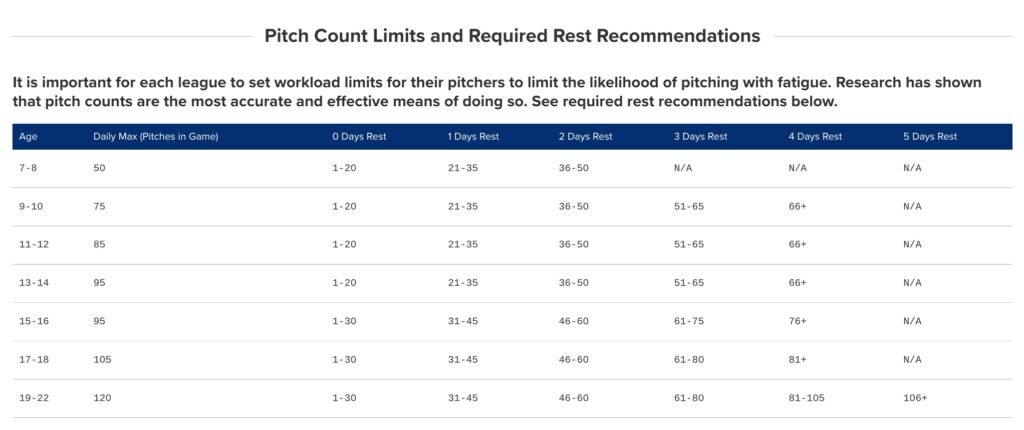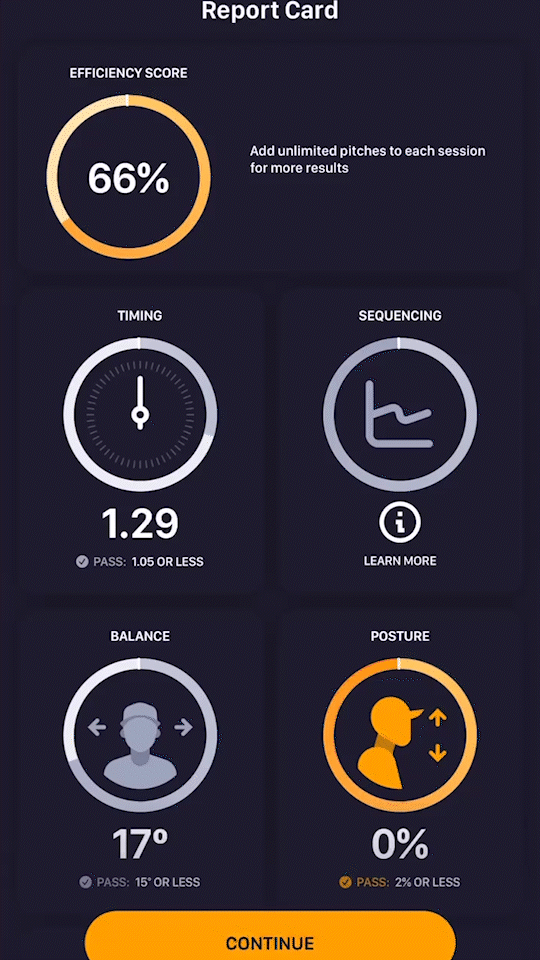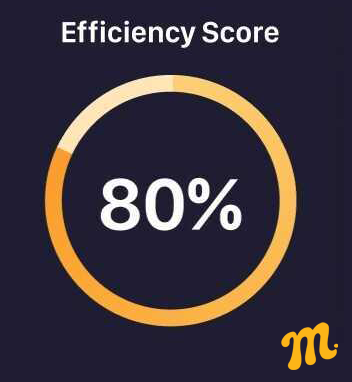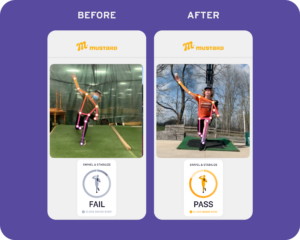You may have recently noticed that percentage score in the yellow circle at the top of your Mustard Report Card and thought, “Hmm, what’s that?” Well, that’s Mustard’s Efficiency Score, which is a cumulative score given based on your performance across the 10 mechanical variables of the pitching delivery measured in the Mustard App.
What does Efficiency Score mean?
According to coach Tom House, elite-level pitchers have Efficiency Scores of 90% or above. College-level or elite high school pitchers are typically 80% or above. And if your score is below 80%, in an ideal world, you wouldn’t be throwing off of a mound, because the mechanics of your pitching delivery are inefficient enough that they could cause injury.
“Parents do need to understand that most Little Leaguers will fail most of the variables, and their efficiency scores will be below 80%, because how many Little Leaguers have big-league mechanics?” explains House. “Keep in mind that the Efficiency Score evaluation is a point-in-time capacity that gives parents, coaches and athletes an idea of what they need to fix.”
And because Little Leaguers do still need to pitch, Coach House recommends that parents and coaches be very careful with pitch totals to keep workload at a level that won’t cause injury. “A Little Leaguer with a low Efficiency Score can still pitch, as long as he or she doesn’t throw too many pitches in one outing,” says House. “Think two or three times per week, at 20-40 pitches total.”
Following the PitchSmart guidelines set out by USA Baseball is also a good way to keep tabs on young pitchers with inefficient mechanics. “But also remember, inefficient mechanics mean there is lots of room for improvement!” says House.

How is Efficiency Score Calculated?
Your Efficiency Score is an average score derived from your scores in all variables of the pitching delivery measured by the Mustard app, as follows.
Timing: Pitchers who get into foot strike in 1.05 seconds or faster are given a 10. 1.15 seconds or faster is a 6, and slower than 1.15 seconds is a 3.
Balance: Pitchers whose heads are fewer than 6 degrees off center at release point are awarded a 10. Scores decrease as the angle of head position increases. Pitchers whose heads are greater than 40 degrees off center are given a 0.
Posture: Pitchers whose heads move up or down less than 1% of their height are awarded a 10. Scores decrease as head movement increases. Pitchers whose heads move more than 10% of their height are given a 0.
Lift & Thrust: Pitchers whose energy angle, measured from the back ankle to the front hip joint at maximum leg lift, is greater than 25 degrees are awarded a 10. Scores decrease as energy angle decreases. Pitchers whose energy angle is less than 3 degrees are given a 0.
Stride: Pitchers whose stride length is greater than or equal to 100% of their height are awarded a 10. Scores decrease as stride length decreases. Pitchers whose stride length is less than 20% of their height are awarded a 0. However, because stride length is so important, extra credit is available! Stride 110% of your height and you’ll be awarded an 11!
Swivel & Stabilize: Pitchers whose glove-side wrist is inside the frame of their bodies at ball release are awarded a 10. Pitchers whose glove-side wrist is outside the frame of their bodies are given a 3.
Stack & Track: Pitchers who have less than 3 degrees of shoulder rotation away from home plate at release point are awarded a 10. Scores decrease as the angle of shoulder rotation away from home plate increases. Pitchers who have more than 33 degrees of shoulder rotation at release point score a 0.
Torque Retention: Pitchers who are able to delay the rotation of their shoulders towards home plate until after footstrike are awarded a 10. The more your shoulders are rotated open towards home plate at footstrike, the lower the score.
Release: If a pitcher passes all 10 mechanical variables in the Mustard app, he or she is awarded a 10 for release point. If one variable is failed, he or she is given a 5. After that, the score is reduced by one as the number of failed variables increases by one. If all variables are failed, the score for release is a 0.

How to improve your Efficiency Score
Working on the individual variables of the pitching delivery that you don’t pass and improving your scores in them will increase your Efficiency Score! “The beauty of the Mustard app is that it tells you what specific variables you need to work on and gives you individualized drills on how to improve them,” says Coach House. “If you work on the things we give you in the “My Plan” section, your mechanics will improve and so will your Efficiency Score.”
If you’d like more great content from Mustard, and you’d like to evaluate and improve your own pitching mechanics, download the Mustard pitching app today.








